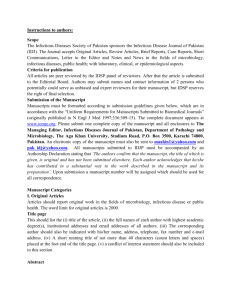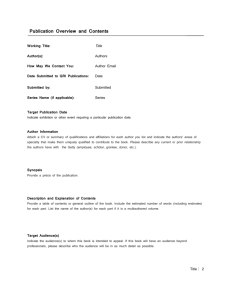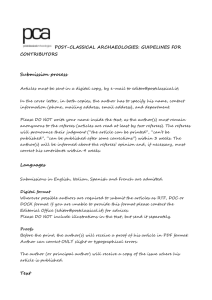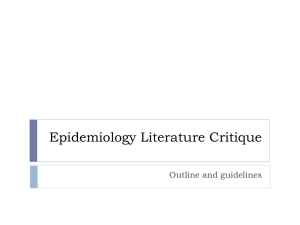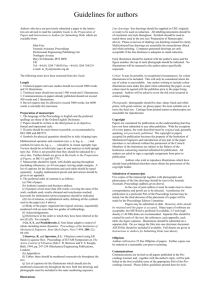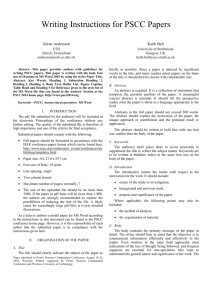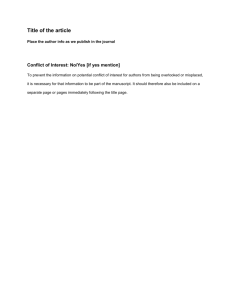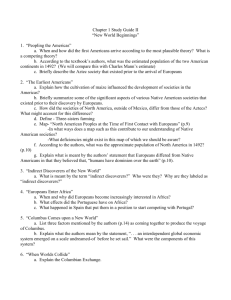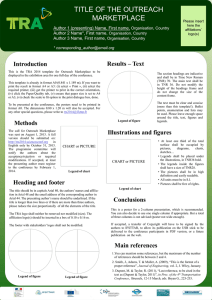Surgical Technique Article Template: Author Guidelines
advertisement
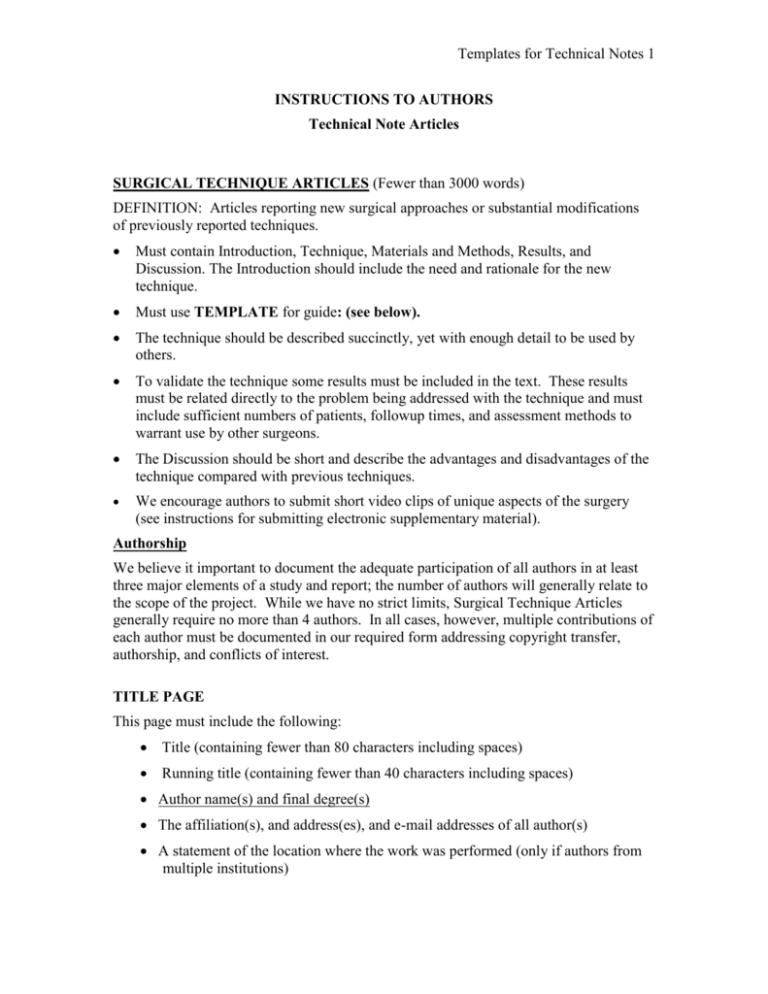
Templates for Technical Notes 1 INSTRUCTIONS TO AUTHORS Technical Note Articles SURGICAL TECHNIQUE ARTICLES (Fewer than 3000 words) DEFINITION: Articles reporting new surgical approaches or substantial modifications of previously reported techniques. Must contain Introduction, Technique, Materials and Methods, Results, and Discussion. The Introduction should include the need and rationale for the new technique. Must use TEMPLATE for guide: (see below). The technique should be described succinctly, yet with enough detail to be used by others. To validate the technique some results must be included in the text. These results must be related directly to the problem being addressed with the technique and must include sufficient numbers of patients, followup times, and assessment methods to warrant use by other surgeons. The Discussion should be short and describe the advantages and disadvantages of the technique compared with previous techniques. We encourage authors to submit short video clips of unique aspects of the surgery (see instructions for submitting electronic supplementary material). Authorship We believe it important to document the adequate participation of all authors in at least three major elements of a study and report; the number of authors will generally relate to the scope of the project. While we have no strict limits, Surgical Technique Articles generally require no more than 4 authors. In all cases, however, multiple contributions of each author must be documented in our required form addressing copyright transfer, authorship, and conflicts of interest. TITLE PAGE This page must include the following: Title (containing fewer than 80 characters including spaces) Running title (containing fewer than 40 characters including spaces) Author name(s) and final degree(s) The affiliation(s), and address(es), and e-mail addresses of all author(s) A statement of the location where the work was performed (only if authors from multiple institutions) Templates for Technical Notes 2 Word Count (Introduction through Discussion): Generally limit manuscripts to fewer than 3000 words. The Corresponding Author name and e-mail address (must be same as Corresponding Author in Editorial Manager). Templates for Technical Notes 3 Abstract Your Abstract must be structured with the following five sections and contain fewer than 250 words Background Description of Technique Patients and Methods Results Conclusions Introduction (maximum of 500 words) All manuscripts must contain an Introduction, typically three to four paragraphs New approaches are typically developed to solve problems with previous approaches; provide one or two paragraphs describing past approaches or techniques, and briefly the disadvantages problems requiring a new approach. Final paragraph stating the questions or purposes and documenting novelty. This paragraph should briefly note what problems the new approach would solve. Surgical Technique (maximum of 500 words) Describe the technique, emphasizing novel aspects, and postoperative care in detail. Provide clear illustrations and/or brief video clips of any particularly unique aspects (see published guidelines for instructions on electronic supplementary material). Patients and Methods Authors must provide all relevant material in the STROBE guidelines at end of template and complete the checklist. Generally use the following order: Study design (typically retrospective review) Relevant patient demographics Description of outcome measures Results (maximum of 500 words) Emphasize the outcomes in your patients as compared with that in the literature. Discussion (maximum of 1000 words) Begin with a restatement of the need for a new approach. Templates for Technical Notes 4 Briefly explore each major limitation of your patient study. Then compare and/or contrast your results with observations or data from the literature. Write one paragraph of comparisons for each question or purpose. When comparing substantial amounts of data from the literature, provide a table or tables of comparative data noting outcome times where relevant. End with a synthesis of your results and those in the literature rather than only conclusions from your own data. Acknowledgments Note any nonfinancial acknowledgments. Begin with, “We thank…” and note the nature of the contribution. References Ensure your references are complete and in alphabetical order and proper format (please see our published instructions on our Website). Please limit the number of relevant references to 50 or less. In-text citations should appear before commas and periods and located in a sentence immediately after the point they are documenting. Legends Provide brief legends to include the major point. Figure legends should be written in complete sentences. Please limit the number of figures to 15 or less. Illustrations with multiple figures (eg, 1A, 1B, 1C) must be labeled "A," "B," and "C" in the lower left hand corner. Each illustration requires a separate legend. Figures should be uploaded and separately labeled in Editorial Manager. Color illustrations should be used for surgical photographs, anatomical photographs, photomicrographs, complex graphics; black and white should be used for other illustrations including line drawings.
